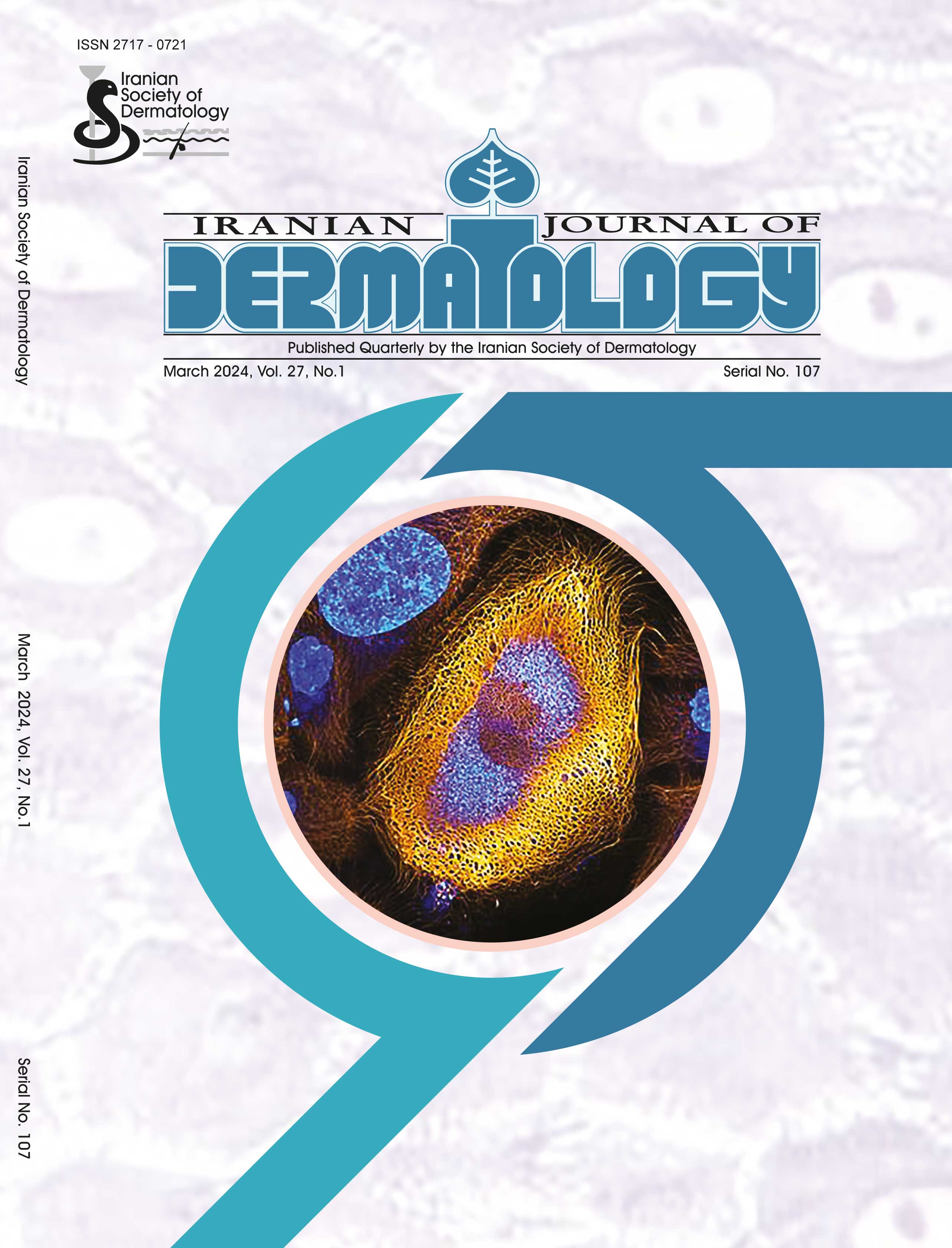Document Type : Original Article
Authors
- Maryam Aghaei 1
- Shahrzad Aghaei 2
- Fariba Iraji 3
- Mohammad-Ali Nilforoushzadeh 4
- Sayed Mohsen Hosseini 5
- Zabihollah Shahmoradi 6
- Seyed Hossein Hejazi 7
1 Skin Diseases and Leishmaniasis Research Center, Isfahan University of Medical Sciences, Isfahan, Iran
2 Department of Molecular Medicine, School of Advanced Technologies, Shahrekord University of Medical Sciences, Shahrekord, Iran
3 Skin Diseases and Leishmaniasis Research Center, Department of Dermatology, School of Medicine, Isfahan University of Medical Sciences, Isfahan, Iran
4 Skin and Stem Cell Research Center, Tehran University of Medical Sciences, Tehran, Iran
5 Department of Biostatistics & Epidemiology, School of Public Health, Isfahan University of Medical Sciences, Isfahan, Iran
6 Skin diseases and Leishmaniasis research center, school of medicine, Isfahan University of medical sciences, Isfahan, Iran
7 Skin Disease and Leishmaniasis Research Center, Department of Parasitology and Mycology, School of Medicine, Isfahan University of Medical Sciences, Isfahan, Iran
Abstract
Background: Vitiligo is an autoimmune disease of the skin that affects both sexes and people of any age. The genetic and environmental factors are involved in the vitiligo etiology. Helicobacter pylori (H. pylori) has an important role in vitiligo progression. Therefore, the present study evaluated H. pylori seropositivity in vitiligo patients compared to healthy individuals.
Method: H. pylori infection was investigated in 210 vitiligo patients and 127 sex- and age-matched healthy controls using Enzyme- Linked Immunosorbent Assay (ELISA) test. The data was analyzed using SPSS software version 20.0, and the groups were compared using T-test and ANOVA tests. P < 0.05 was considered statistically significant.
Results: Vitiligo patients had higher median levels of IgG (29.68 ± 28.28 RU/mL) than (19.08 ± 20.12 RU/mL) in healthy controls (P < 0.000). Moreover, there was no significant difference between groups based on the level of IgM (P < 0.207). In the vitiligo group, IgG or IgM means were different compared to age (P < 0.33)/ (P < 0.017) and early symptoms (P < 0.00) (P < 0.02), respectively. Unlike IgG, there was a significant difference between the mean level of IgM, the onset age of vitiligo (P < 0.022), and the duration of the disease (P < 0.05). Moreover, males and females with vitiligo had a higher seropositivity to H. pylori antibodies than the control group.
Conclusion: Vitiligo was found to be significantly associated with H. pylori in Iranian patients. Therefore, it seemed probable that H. pylori had an important role in the initiation or progression of disease activity in vitiligo.
Keywords

